Archaeology & History
Archaeologists Find Treasure-Filled 1,700-Year-Old Mayan Tomb
The lead researcher described the find as akin to winning the lottery.
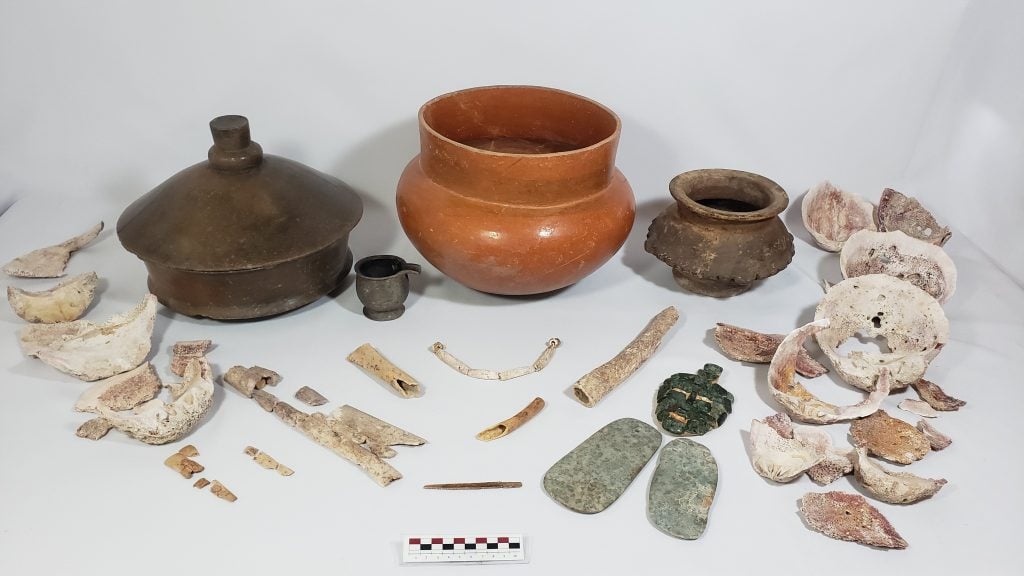
The lead researcher described the find as akin to winning the lottery.

Richard Whiddington

Archaeologists in Guatemala have uncovered a Mayan tomb estimated to be from 350 C.E. deep in the Maya Biosphere Reserve, a discovery lead researcher Francisco Estrada-Belli has described as akin to winning the lottery.
Inside the tomb, the team from Tulane University found a mosaic jade mask, human femur bones carved with writings, and spondylus shells, which Mayan royalty used as jewellery and currency.
Chochkitam, which is located on the border of modern-day Mexico and Belize, was a medium-sized city of between 10,000 and 15,000 inhabitants. The ongoing excavations are demonstrating Chochkitam’s linkages with larger regional kingdoms, such as Tikal to the south and Kaanu’l to the north. One such evidence is femur bone hieroglyphs that connect a previously unknown Chochkitam king to other Mayan royalty.
“In the last decade, our team has been investigating a number of archaeological sites that were known only as dots on the map of the remote northeastern corner of Guatemala,” Estrada-Belli said via email. “We hope to recover more evidence of its interactions with its neighbors and distant overlords. Doing so will help us learn more about how Maya civilization was structured and functioned.”
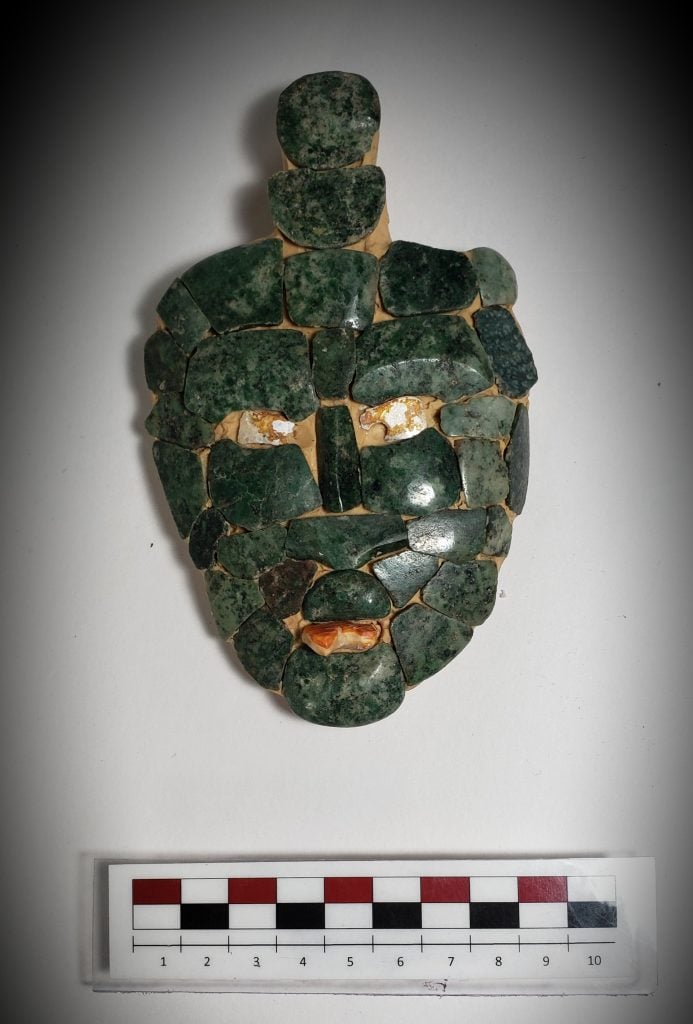
A mosaic jade mask discovered inside an ancient Maya tomb dating back 1,700 years in Chochkitam. Photo: Francisco Estrada-Belli.
The research was guided to Chochkitam by a 1924 expedition led by Tulane University’s Fran Blom that had uncovered a carved monument with hieroglyphs. Estrada-Belli’s hunch was that there was more to be found.
Using lidar, which involved firing lasers from an airplane, the archaeologists mapped the surrounding jungle floor. Their attention was drawn to a series of tunnels that looters had carved out of the thick jungle foliage. Fortunately, they had stopped a few feet from the tomb.
Located beneath a pyramid, the tomb was in relatively good condition, though the stone ceiling had collapsed.
Artifacts from Mayan tombs remain key to understanding how the civilization was structured and functioned, a pursuit that has long been hampered by looting. “Tombs were accompanied by sumptuous offerings for the afterlife,” Estrada-Belli said. “In this case the pottery would have contained food and drink. While the carved bones and jade mask were personal objects with special, sacred meaning.”
Researchers will now conduct DNA tests on the bones and continue excavating the site in the hope of further discoveries. Once this analysis is completed all objects will be exhibited in the National Museum. “We hope young Guatemalans can learn more about their wonderful ancient history,” Estrada-Belli said.
See more images, below:
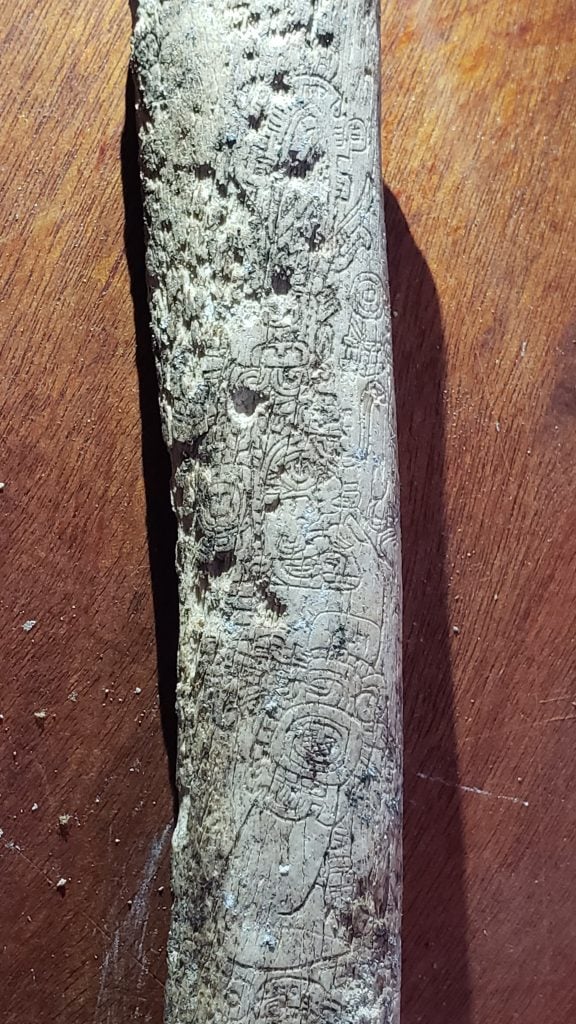
An incised femur bone discovered inside an ancient Maya tomb. Photo: courtesy Francisco Estrada-Belli.
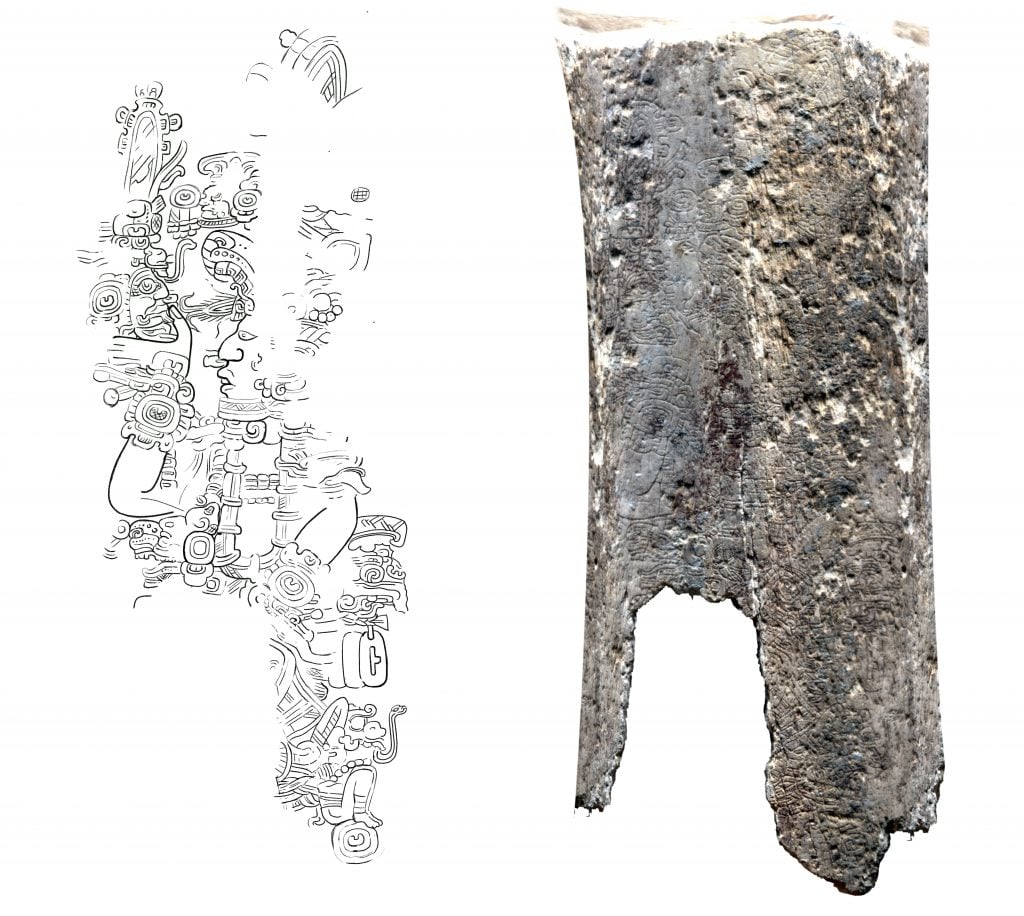
Incised femur bone beside drawing by Alexandre Tokovinine with the Tulane University Holmul
Archaeological Project. Image: courtesy Francisco Estrada-Belli.
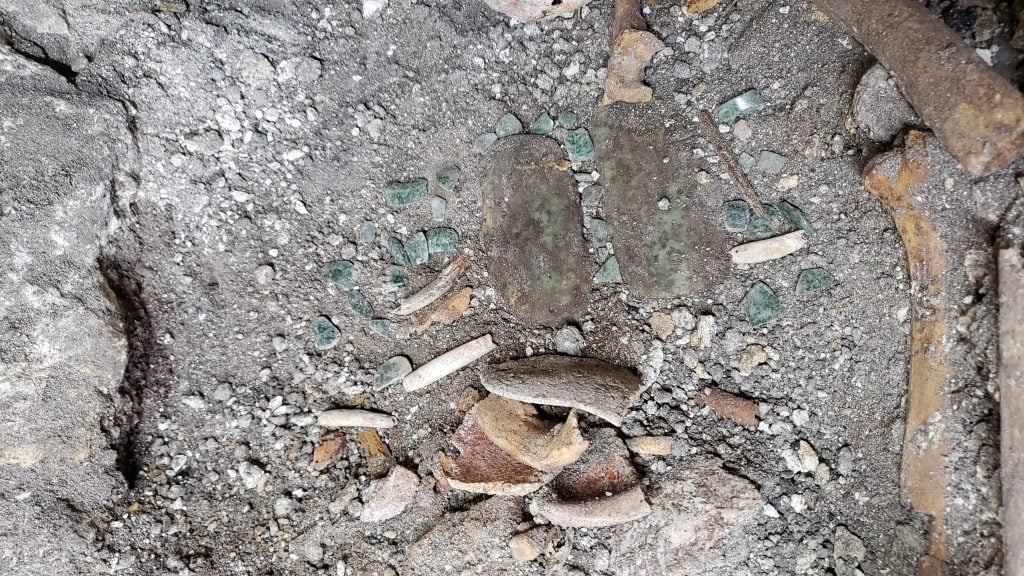
The excavation site of an ancient Maya tomb discovered in Chochkitam, Photo: Francisco Estrada-Belli.
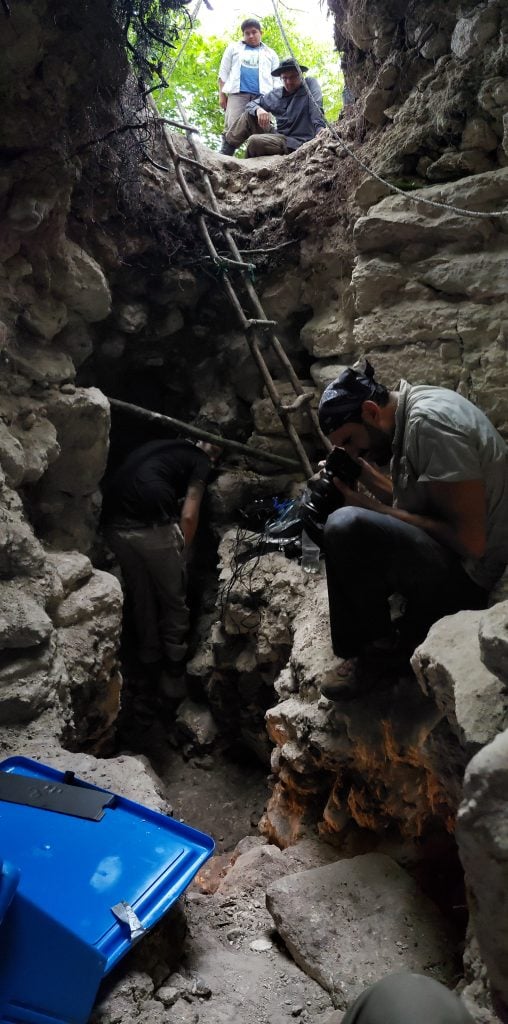
Archaeologists at work in Chochkitam. Photo: Francisco Estrada-Belli.